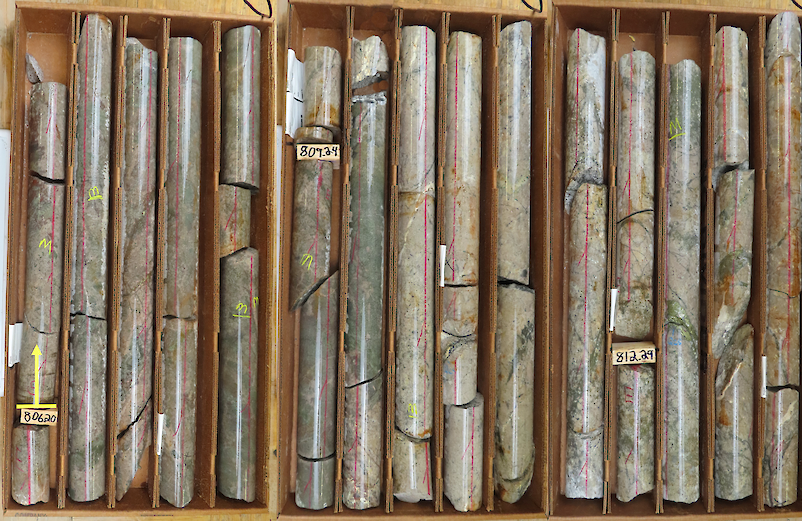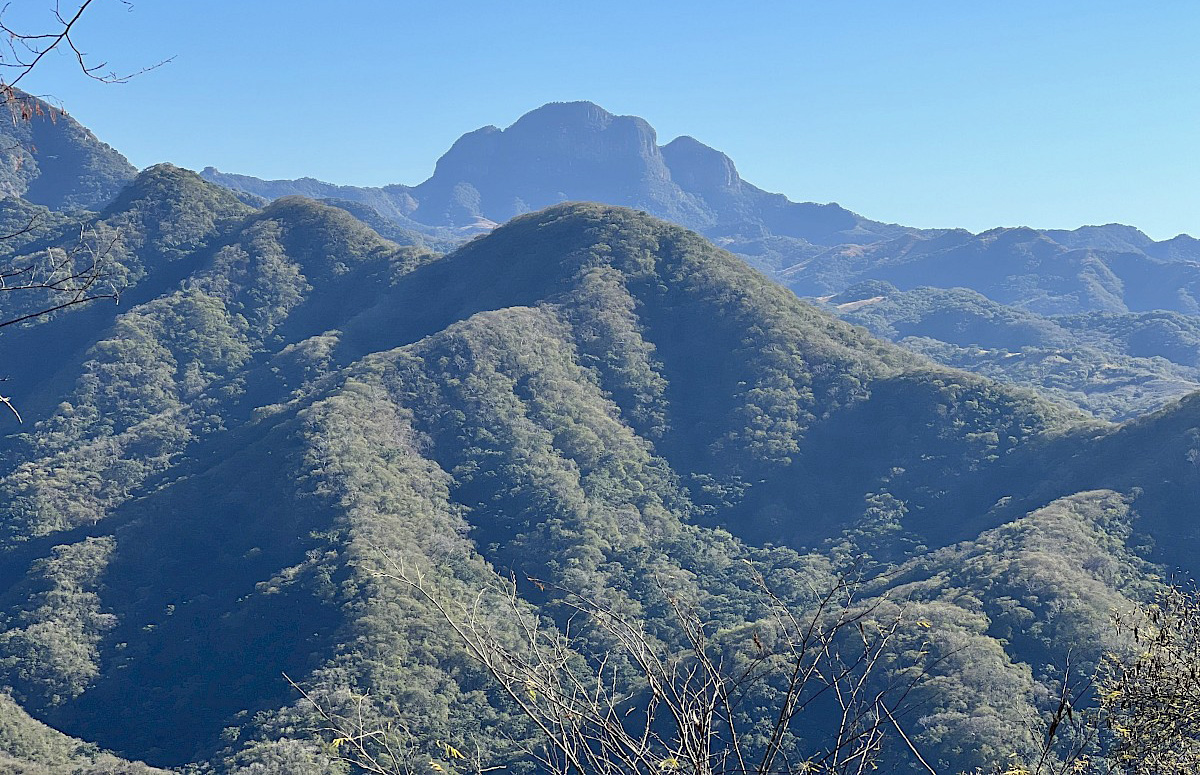The Gold Report: Were you surprised by the collapse of the prices of gold and silver?
Chris Mancini: Yes, I was very surprised. I thought that the macro backdrop for gold and silver was very positive at the beginning of the year. The Federal Reserve had just begun its process of Quantitative Easing 3 (QE3): printing $85 billion ($85B) a month. Japan announced it would undertake its own QE program, which would be a much bigger percentage of its GDP than the U.S. plan.
TGR: And Mario Draghi said he'd do "whatever it takes"?
CM: Yes. The president of the European Central Bank said he'd do whatever it takes to ensure that there was a recovery in Europe, implying a willingness to buy bonds with printed money. It seemed that all this liquidity splashing around should have been positive for gold.
TGR: What, if any, is the relationship between QE and the price of gold?
CM: I think what drives the gold price is the view that gold is the ultimate savings instrument. It can't be tampered with, is not replicable and is nobody else's liability. With QE1 and QE2, that money found its way to the highest-growth economies: China, India, Thailand, Vietnam and other countries in Asia. These countries experienced high rates of inflation because this money was chasing scarce resources. And so the average guy on the street was getting 3–4% interest rates on his savings in a the equivalent of a six-month certificate of deposit versus price increases of goods of more than 10%. In other words, negative real interest rates. Holding cash in the bank is a money-losing proposition. This led to an increased demand for gold.
"What drives the gold price is the view that gold is the ultimate savings instrument."
With QE3, we have continued to see a lot of demand from China, India and other countries in Asia, especially as the gold price has come down. But we also heard this steady drumbeat of talk that QE was going to end because the economy was doing really well. And because the economy was doing well, people should be in income-producing investments, like stocks or even bonds. So they started getting into them.
This became a self-fulfilling cycle: stocks went up, which meant that the economy was supposedly getting better, which meant that QE was ending, so you shouldn't have any gold. Then we had the crash in April.
TGR: Don't some people believe that QE is the only thing keeping us from economic disaster?
CM: Over the past three quarters, we've had enormous and unprecedented amounts of fiscal and monetary stimulus, while the U.S. economy has grown on average by less than 1%. What I don't understand is why people expect the economy to grow at 3–4% without any monetary or fiscal stimulus.
Interest rates were pushed way down by QE, and so people needed to find yield. They weren't finding any in bonds. So they went into dividend-paying stocks. So you had this enormous rise in the stock market so far this year, which I think has been mostly due to QE and forcing investors out of other assets, bonds specifically.
TGR: That's what they say about inflation—the money has to go somewhere, right?
CM: What the stock market is showing us is the effect of the creation of $85B every month.
TGR: Let's assume there will be a tapering of QE. What effect will this have on the price of gold?
CM: I don't think a relatively small tapering of QE would have a meaningful effect because it has already been priced in to a large degree. If QE ends completely, I think the S&P 500, Dow and NASDAQ will correct meaningfully. And then you'll hear a tremendous clamor from the markets for more QE. If that happens, there will be a realization that we're in this for good, and I think that this would be good for gold.
TGR: You have probably come across these stories of skullduggery in paper gold. One story heard often these days is that the Comex in London has no physical gold. Another is of tremendous amounts of paper gold being leased in order to drive down the price. Do you put any credence in these stories?
CM: I don't know the intricacies of it, so I can't really say. However, the severe drop in gold on those two days in April made very little sense from a pure supply and demand perspective. It just didn't smell right.
TGR: Even before the gold price collapse, gold equities were in the doldrums. So with gold in the $1,300s, what is the case for gold equities?
CM: The equities are highly leveraged to the gold price. So if the price of gold goes back up to where it was at the beginning of the year, $1,500–1,600/ounce ($1,500–1,600/oz), the profitability for gold miners is going to be highly leveraged on the upside. The other case to be made is that given that the average all-in cost of production is around $1,100/oz and there are plenty of mines that produce at $1,350/oz or above, there will be mines that will come offline. So that supply coming offline should support the gold price. The companies are cutting costs right now, and the cost base should be relatively fixed. With gold at, say, $1,600/oz, the companies will be very profitable given the cost cuts taking place now. I believe they'll then pay down debt, and then they'll hopefully start returning cash to shareholders in the form of dividends. I think there is a very good argument to be made that if you own the miners now and you want exposure to upside movement in the gold price, the miners are a very good way to do it.
TGR: You've divided gold companies into three categories "relative to their ability to be able to weather the current storm." These categories are the "Good," the "Not-So-Bad" and the "Maybe Ugly." Which criteria determine the good company?
CM: Access to cash, access to cash flow and the ability to take advantage of the current distress in the market. The best example now is a royalty or streaming company.
TGR: What royalty and streaming companies do you like?
CM: I like Royal Gold Inc. (RGLD:NASDAQ; RGL:TSX), Franco-Nevada Corp. (FNV:TSX; FNV:NYSE) and Silver Wheaton Corp. (SLW:TSX; SLW:NYSE). All of these companies have access to cash. They are all cash-flow generative. None of them has real operating leverage. They have royalty or streaming rights to lower-cost mines, which really aren't at much risk of coming offline in the lower gold-price environment.
"The severe drop in gold on those two days in April made very little sense from a pure supply and demand perspective."
Some are taking advantage of the downturn. Franco-Nevada bought a royalty on Pretium Resources Inc.'s (PVG:TSX; PVG:NYSE) Brucejack deposit in British Columbia. It bought a royalty on Midas Gold Corp.'s (MAX:TSX) Golden Meadows deposit in Idaho, so that Midas could finance its existence going forward.
TGR: Is Franco-Nevada your second-largest holding?
CM: Yes. We've held it since its initial public offering. Franco is able to benefit in good times because companies expand and also find more gold, but it doesn't have to put up any capital. And it has the ability to capitalize during the bad times by picking up some good royalties and good properties at very good valuations, which is what it has done in the past couple of quarters.
TGR: Could you name some other companies in your good category?
CM: B2Gold Corp. (BTG:NYSE; BTO:TSX; B2G:NSX) has net cash on its balance sheet and generates cash flow. The company is building its Otjikoto project in Namibia, which is low cost. Once that is completed, it has no further capital commitments. It has a credit line of about $150M that it could use to finance another project. If it doesn't make an acquisition, it should be fine. If it does, it has the ability to make a very accretive acquisition.
Another company in the Good category would be Fresnillo Plc (FRES:LSE), a Mexican company.
TGR: Your fourth-largest holding?
CM: Yes. Fresnillo has net cash on its balance sheet. It has some of the lowest-cost production in the industry for silver and gold. It is generating cash flow now. It is building mines. And it is starting to fund some juniors that are running out of cash. Now is a great time to do it.
TGR: When you spoke to The Gold Report in January, Randgold Resources Ltd. (GOLD:NASDAQ; RRS:LSE) was No. 1 of your holdings, around 12%. At the end of June, that's up to 13.8%. Why do you like it so much?
CM: Randgold has been through a number of cycles. It has net cash on its balance sheet and has low-cost operations. It should be able to benefit from this downturn when we come out on the other side. The company has good managers, and it is building in an environment where input costs are becoming less tight. Its Kibali project in the Democratic Republic of Congo should begin production at the beginning of 2014. After that, I could see Randgold buying exploration-stage properties in distress or continuing to earn into properties by financing their exploration.
TGR: What characterizes the Not-So-Bad companies?
CM: Access to enough cash that they won't need to finance anytime soon or access to capital through cash flow. One example is Comstock Mining Inc. (LODE:NYSE.MKT), which built its Nevada mine in an unconventional way. In a typical Canadian model, a company would go out and spend a lot of money drilling a deposit, then trying to finance it into production or sell it. Comstock knew that it had gold: a very economic, small, oxidized, heap-leachable deposit. It decided to bring that into production while still exploring. So now it is cash-flow generative and will become more so as the mine scales up. As it explores, it will be able to show how big the deposit could be. That said, Comstock's balance sheet is kind of tight right now: only a few million at the end of Q2/13. Hopefully, it won't have to finance again. If it doesn't, I would promote it to the Good category.
TGR: What are some other companies in this category?
CM: Detour Gold Corp. (DGC:TSX) is coming into production and should be cash-flow generative at $1,300/oz gold. It has a little bit of debt and just did an equity deal to get it through this startup period. I'd put Detour in the Not-So-Bad category now, but once it's at full commercial production, if it operates according to plan and begins to pay down some of its debt, I would promote it to the Good category.
I would rate Continental Gold Ltd. (CNL:TSX; CGOOF:OTCQX) in the Not-So-Bad category. It can weather the storm. It has a lot of cash. The company can get its project in Colombia to the preliminary economic assessment or prefeasibility stage with the cash on its balance sheet. Once that's done, it will be able to show it has a very good, very high-grade gold deposit, which shouldn't require a large upfront capital expenditure. After it demonstrates the economics of the deposit through a prefeasibility study, it could be bought by a major.
TGR: How do you rate companies that have financed, but will need to go to the markets again?
CM: I would rate them between Maybe Ugly and Not-So-Bad. The true Maybe Ugly companies don't have a defined resource and don't have economics surrounding the resource. They're just exploring and need cash.
"If the price of gold goes back up to where it was at the beginning of the year, $1,500–1,600/oz, the profitability for gold miners is going to be highly leveraged on the upside. "
Golden Queen Mining Co. Ltd. (GQM:TSX) is not like that because it has a defined feasibility study, and it has a permit to mine. It is actually building its very economic, heap-leach deposit in Mojave, Calif. It has $10M, which should get it maybe to the beginning of 2014. It is going to need to finance again, but when it does, it should be able to show that any return on incremental capital being committed by an equity investor will be high even at $1,300/oz gold. I think Golden Queen is OK.
Eastmain Resources Inc. (ER:TSX) also has the potential to move into the Not-So-Bad category. It has a very high-grade deposit in a good jurisdiction: Eau Claire in north-central Quebec. It will publish a resource within the next couple of months showing about 1+ million ounces of very high-grade, open-pittable gold. It also has mineral rights to a vast, prospective and never explored vein field adjacent to Eau Claire.
TGR: How do you rate the majors?
CM: Newmont Mining Corp. (NEM:NYSE) is in the Good category now. The company is cutting its cost structure and doesn't need to finance. It has cash on its balance sheet. Newmont is in the process of completing construction on a new mine called Akyem in Ghana. It is also in the process of completing a pit layback on a copper-gold deposit in Indonesia called Batu Hijau, which should give it access to increased cash flow.
Barrick Gold Corp. (ABX:TSX; ABX:NYSE) is in the Not-So-Bad category. It has some of the best mines in the world, is the biggest producer and one of the lowest-cost producers. But Barrick has a lot of debt, and in this lower gold price environment, all its excess cash flow is going to service that debt.
Goldcorp Inc. (G:TSX; GG:NYSE) is in the Good category. It is building the Cerro Negro project in southern Argentina, the Éléonore project in northern Quebec (adjacent to Eastmain's Eau Claire deposit) and an expansion to its Red Lake mine in Ontario. So Goldcorp is spending a lot right now, but it has a net-neutral balance sheet. Once these projects are completed by the middle of next year, they should generate a lot of cash. Goldcorp owns 10% of Eastmain, and if it were to finance Eastmain at reasonable valuations, I think that would be accretive for it.
Agnico-Eagle Mines Ltd. (AEM:TSX; AEM:NYSE) is in the Good category and shouldn't have any issues with financing in the short term. It is building a heap-leach project called La India in Mexico, which should be brought on-line by the middle of 2014. The key issue is its LaRonde mine, which will be getting to some higher-grade ore hopefully by the beginning of next year. This will generate a lot of cash. Agnico has taken advantage of the downturn by financing some juniors. It has bought stakes in ATAC Resources Ltd. (ATC:TSX.V), Kootenay Silver Inc. (KTN:TSX.V), Probe Mines Limited (PRB:TSX.V) and Sulliden Gold Corp. (SUE:TSX; SDDDF:OTCQX; SUE:BVL).
I think AngloGold Ashanti Ltd. (AU:NYSE; ANG:JSE; AGG:ASX; AGD:LSE), Sibanye Gold Ltd. (SBGL:NYSE) and Harmony Gold Mining Cos. (HMY:NYSE; HRM:LSE) are really going to struggle, given their high costs and labor issues in South Africa.
TGR: What about some other of the larger companies?
CM: Newcrest Mining Ltd. (NM:TSX; NCM:ASX) is in the Not-So-Bad category now, and hopefully it can get into the Good category. In this lower gold price environment, it has really taken its medicine. It's modified its mine plan at its biggest mine, Lihir, to maximize cash flow. It modified the mine plan at Telfer to some extent. Once its best mine, Cadia East, gets to full production capacity—it's an underground block cave that has copper and gold—it will generate a great deal of cash. It has a little bit of debt now, and it will have to deal with that.
I'd put Yamana Gold Inc. (YRI:TSX; AUY:NYSE; YAU:LSE) in the Good category. It has financial flexibility. It is building three mines now: Ernesto/Pau-a-pique, Pilar and C1 Santa Luz. When they are finished, we'll see how much cash flow they generate. Of its current stable, the most economic mines are El Peñón, Chapada and Mercedes, which make up around half of Yamana's production. They are good, very low-cost mines. Their other mines are only OK, but they do generate good cash flow at $1,300/oz gold.
I think Kinross Gold Corp. (K:TSX; KGC:NYSE) is a little stuck. I'd put it in the Not-So-Bad category. It has deferred Tasiast, which was its big capital item, so I don't think it's going to need finance any time soon. Its balance sheet is OK, but its mines are not generally great, and some are relatively high cost. So at $1,300/oz, it's not going to be generating a lot of free cash flow. If Kinross doesn't build Tasiast, then it's difficult to see where it goes from here.
TGR: If trillions of dollars keep being created to forestall deflation, what does this mean for gold in the long term?
CM: I don't think anyone really knows the answer to that. To the degree that we had economic growth over the past 10 years, it's been predicated on increased leverage. After the leverage bubble popped, consumers couldn't borrow any more. The way we avoided deflation was through increased government borrowing and money printing. Eventually, it comes down to people questioning the value of the dollars in their pockets, and when people begin to doubt paper money, gold should be a very valuable alternative and do extremely well.
TGR: Chris, thanks so much.
Chris Mancini, CFA, is a research analyst at the Gabelli Gold Fund Inc., specializing in precious-metals mining companies. He has over 13 years of investment management experience, including research analyst positions at hedge funds Satellite Asset Management and R6 Capital Management. Mancini earned a bachelor's degree in economics with honors from Boston College.
Want to read more Gold Report interviews like this? Sign up for our free e-newsletter, and you'll learn when new articles have been published. To see a list of recent interviews with industry analysts and commentators, visit our Streetwise Interviews page.
DISCLOSURE:
1) Kevin Michael Grace conducted this interview for The Gold Report and provides services to The Gold Report as an independent contractor. He or his family own shares of the following companies mentioned in this interview: None.
2) The following companies mentioned in the interview are sponsors of The Gold Report: Franco-Nevada Corp., Pretium Resources Inc., Comstock Mining Inc., Detour Gold Corp., Continental Gold Ltd., Goldcorp Inc., Probe Mines Limited and Sulliden Gold Corp. Streetwise Reports does not accept stock in exchange for its services or as sponsorship payment.
3) Chris Mancini: I or my family own shares of the following companies mentioned in this interview: Agnico-Eagle Ltd., Barrick Gold Corp., Comstock Mining Inc., Continental Gold Ltd., Eastmain Resources Inc., Franco-Nevada Corp., Fresnillo Plc, Golden Queen Mining Co., Goldcorp Inc., Newcrest Mining Ltd. and Randgold Resources Ltd. I personally am or my family is paid by the following companies mentioned in this interview: None. My company has a financial relationship with the following companies mentioned in this interview: None. I was not paid by Streetwise Reports for participating in this interview. Comments and opinions expressed are my own comments and opinions. I had the opportunity to review the interview for accuracy as of the date of the interview and am responsible for the content of the interview.
4) Interviews are edited for clarity. Streetwise Reports does not make editorial comments or change experts' statements without their consent.
5) The interview does not constitute investment advice. Each reader is encouraged to consult with his or her individual financial professional and any action a reader takes as a result of information presented here is his or her own responsibility. By opening this page, each reader accepts and agrees to Streetwise Reports' terms of use and full legal disclaimer.
6) From time to time, Streetwise Reports LLC and its directors, officers, employees or members of their families, as well as persons interviewed for articles and interviews on the site, may have a long or short position in securities mentioned and may make purchases and/or sales of those securities in the open market or otherwise.




































